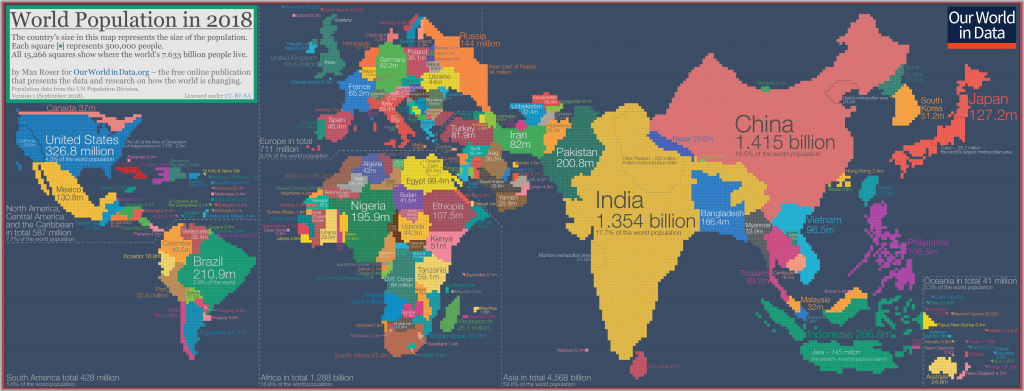The selection of world facts and figures that follow provide the traveler with some background information on a world that seems to be more within our reach every day and a chance to look at this world as a whole before becoming engrossed in the more detailed country-by-country descriptions in the pages that you may find on this website.
Geography
The world’s total surface area is 510,069,120 square kilometers or 196,938,800 square miles. Water covers a substantial 70.9 percent of the world’s surface and the world’s four largest water areas are its oceans – the Atlantic, Arctic, Indian and Pacific Oceans. A mere 30 percent of the world’s area island and the largest land masses are its six continents: Asia, Africa, Oceania, Europe, Antarctica and America (America often divided into North America and South America).
Each continent, except Antarctica, consists of different countries. The largest of the world’s countries is the Russian Federation which spans the continents of Europe and Asia with an area of 17,075,400 square kilometers or 6,592,850 square miles. The smallest country is the Vatican City with an area of only 0.44 square kilometers or 0.2 square miles.
The world’s terrain is very diverse, ranging from its highest mountain, Mount Everest (8,848 meters or 29,028 feet), to its lowest land depression, the Dead Sea (408 meters or 1,338 feet below sea level). Approximately 11 percent of the world’s land is permanently covered with ice, while hot and cold deserts cover 40 percent of the world’s surface.
Population
The estimated world population for the year 2018 is 7,729,966,429. The current ten-year growth rate is 1.8 percent. The world birth rate is 22 births per 1,000 population (1998) and the corresponding death rate is nine deaths for every 1,000 live births. The life expectancy figure for the world, in general, is 69 years (67 years for males and 71,1 years for females).
There is considerable variation between the world’s 196 countries in terms of population growth. The most populous country is China, with a population of 1,392,730,951. Developed countries, such as the UK, have populations that evenly distributed across the age groups and usually a growing percentage of the population is elderly. By comparison, a large proportion of the population in developing countries is in the younger age group and about to enter their most fertile years. This factor accounts for the trend of higher levels of population in developing countries.

Countries within the six continents vary greatly in the standard of living they offer. The Human Development Index (published in 1999 by the United Nations) ranks countries according to their quality of living, from the most to the least livable. Canada, Norway, and Japan were ranked as the top three most livable countries while at the opposite end of the scale, Sierra Leone, Niger and Ethiopia rated the least livable countries. Levels of literacy also vary greatly throughout the world. According to UN figures, 79.4 percent of the world’s population over the age of 15 can read and write. Of this total, only 73.6 percent of women, compared to 85.2 percent of men, are literate.
Travel safety
To ensure your safety and enjoyment when traveling, it is vital to remember that some areas of the world are a dangerous one and out of bounds for tourists. This can be because of war, famine or the threat of kidnapping Such areas include parts of Africa, certain rural areas of Indonesia, Algeria and the Indian states of Jammu and Kashmir. Further up-to-date warnings can found in newspapers on television and the Internet and in local libraries. Countries which have had recent warnings include Somalia, Sudan, Colombia, and Burundi. It is important to observe such warnings when planning a visit to more unusual or remote destinations.